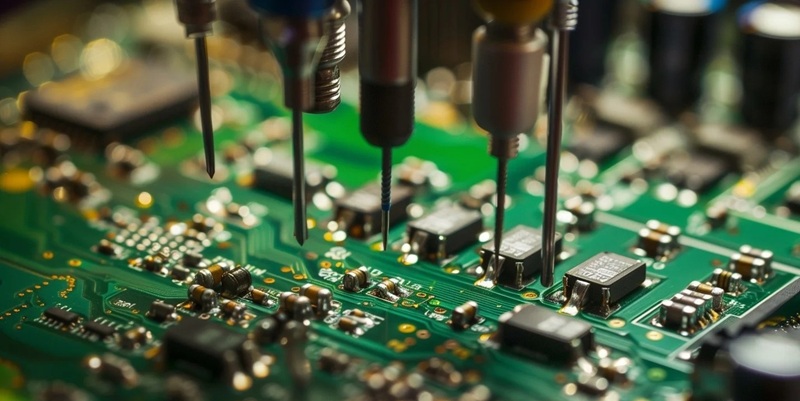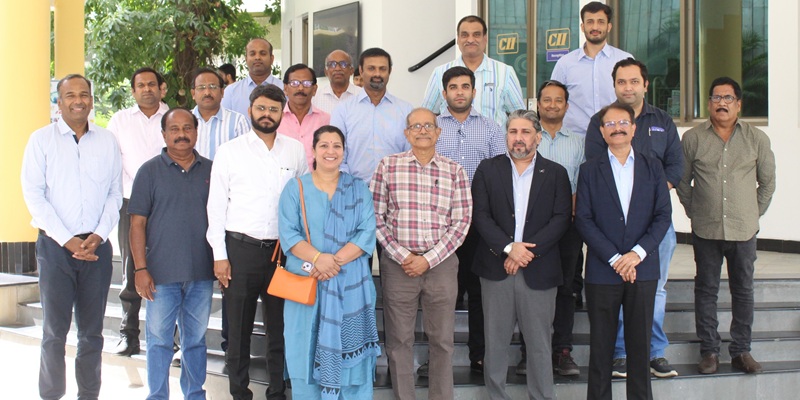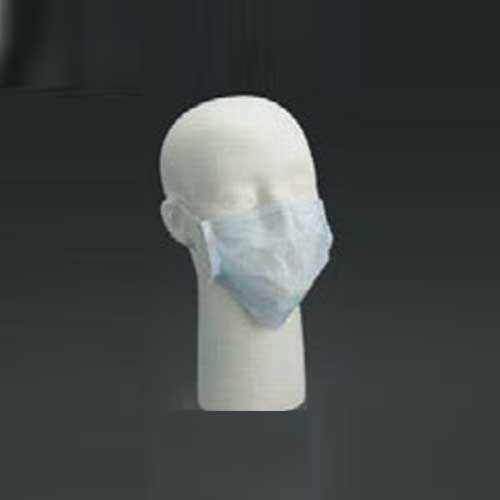Schedule a Call Back
Biomaterials for versatile applications
 Technical Articles
Technical Articles- Apr 01,18

It is a human endeavour to help mankind to fight diseases and strive to find solutions to human sufferings - be it in the form of a bone, tissue, eyesight or heart problem or many other problems. With biomaterials it is now possible to treat, augment, repair or replace a tissue function of the body, says Dhirajlal K Chauhan.
Biomaterial is a synthetic material used to make devices to replace part of a living system or to function in intimate contact with living tissue. It is a substance that has been engineered to interact with biological systems for a medical purpose or a diagnostic one. These materials encompass elements of medicine, biology, chemistry, tissue engineering and materials science. As a science, biomaterials are about fifty years old. The study of biomaterials is called biomaterials science or biomaterials engineering. For use in the human body, a biomaterial should be ‘bio compatible’ ie when it is placed in the human body, under various environments and various chemical and physical conditions in the body it should resist bacterial attack, should not degrade and should get accepted by the human body.
It is important to note that a biomaterial that is biocompatible or suitable for one application may not be biocompatible for another application.
Bio materials are made up of metals, ceramics, polymers, glasses, carbons or composites and may be in biodegradable form also.
Metallic bio materials
These bio materials include stainless steel, titanium metal and alloys, Cobalt base alloys.
Cobalt-chrome is metal alloy of cobalt and chromium and has a very high specific strength and is commonly used in dental implants, and orthopaedic implants.
Ceramics
Bio ceramics and bio glasses are ceramic materials that are biocompatible. These are an important subset of biomaterials. Bio ceramics range in biocompatibility from the ceramic oxides, which are inert in the body, to the other extreme of resorbable materials, which are eventually replaced by the body after they have assisted repair. Bio ceramics are typically used as rigid materials in surgical implants, though some bio ceramics are flexible. The ceramic materials used are not the same as porcelain type ceramic materials. These are closely related to either the body's own materials or are extremely durable metal oxides.
The most frequently used ceramic implant materials include aluminium oxides, calcium phosphates, and apatites and graphite. Glasses have also been developed for medical applications. The use of ceramics is attributed to inertness in the body; formability into a variety of shapes and porosities; high compressive strength; and in some cases their excellent wear characteristics.
Selected applications of ceramics include hip prostheses, artificial knees, bone grafts, and a variety of tissues in growth related applications in orthopaedics, dentistry and heart valves. Applications of ceramics are in some cases limited by their generally poor mechanical properties in tension and load bearing. Implant devices that are to be subjected to significant tensile stresses must be designed and manufactured with great care if ceramics are to be safely used.
Glass bio-materials
Bioabsorbable metallic glass is a type of amorphous metal, which is an element that already exists inside the human body, namely Mg, Zn and Ca. These amorphous alloys are a special type of biodegradable metal. Metallic glass is an alloy of gold and silicon (Au75Si25). It was first produced in 1960. This and other glass-forming alloys need cooling extremely rapidly 106 ºK/s to avoid crystallisation. As a consequence of this, metallic glasses could only be produced in a limited number of forms (typically ribbons, foils, or wires). Hence, metallic glass specimens (with a few exceptions) are limited to thicknesses of less than one hundred micrometers.
Polymers
There are a large number of polymeric materials that have been used as implants or part of implant systems. Polymeric systems include acrylics, polyamides, polyesters, polyethylene, polysiloxanes, polyurethane, and a number of reprocessed biological materials.
Some of the applications include the use of membranes of ethylene-vinyl-acetate (EVA) copolymer for controlled release and the use of poly-glycolic acid for use as a resorbable suture material. Some other typical biomedical polymeric materials applications include: artificial heart, kidney, liver, pancreas, bladder, bone cement, catheters, contact lenses, cornea and eye-lens replacements, external and internal ear repairs, heart valves, cardiac assist devices, implantable pumps, joint replacements, pacemaker, encapsulations, soft-tissue replacement, artificial blood vessels, artificial skin, and sutures.
Composite materials
These materials have been extensively used in dentistry and prosthesis designers are now incorporating these materials into other applications. Typically, a matrix of ultrahigh-molecular-weight polyethylene (UHMWPE) is reinforced with carbon fibers.
\ These carbon fibers are made by pyrolizing acrylic fibers to obtain oriented graphitic structure of high tensile strength and high modulus of elasticity. The carbon fibers are 6- 15µm in diameter, and they are randomly oriented in the matrix. In order for the high modulus property of the reinforcing fibres to strengthen the matrix, a sufficient interfacial bond between the fiber and matrix must be achieved during the manufacturing process.
This fiber reinforced composite can then be used to make a variety of implants such as intra-medullary rods and artificial joints. The mechanical properties of these composites vary with the proportion of carbon fibers. Hence, it is possible to modify the material design flexibility to suit the ultimate design of prostheses.
Composites have unique properties and are usually stronger than any of the single materials from which they are made. Applications of bio materials and their uses in different organs in human body are listed in Tables 1 and 2.
Biodegradable materials
Another class of materials that is receiving increased attention is biodegradable materials. Generally, when a material degrades in the body its properties change from their original values leading to altered and less desirable performance. It is possible, however, to design into an implant's performance the controlled degradation of a material, such that natural tissue replaces the prosthesis and its function.
Examples include: Suture material that hold a wound together but resorb in the body as the wound heals and gains strength. Another application of these materials occurs when they are used to encourage natural tissue to grow. Certain wound dressings and ceramic bone augmentation materials encourage tissue to grow into them by providing a "scaffold". The scaffold material may or may not resorb over a period of time but in each case, natural tissue has grown into the space, then by restoring natural function.
One final application of biodegradable materials is in drug therapy, where it is possible to chemically bond certain drugs to the biodegradable material, when these materials are placed within the body, the drug is released as the material degrades, thereby providing a localised, sustained release of drugs over a predictable period of time.
Dhirajlal K Chauhan is a metallurgical engineer with B Tech (Hons) and M Tech from IIT Bombay. He is a Director of METCON, a technical consultancy organisation. The service areas include heat treatment processes for various alloy tool steels, cutting and forming tools, castings, stainless steels, hard facing jobs, selection of heat treatment equipment, setting up of metallurgical lab and quality assurance in cold rolling mills, process controls and quality problems of cold rolled strips, training of personnel for heat treatment and quality assurance of CR strips. He can be reached on email: chauhan_dhirajlal@yahoo.com or Mob: +91 89803 94971.
Use of Biomaterials and examples
| Replacement of diseased and damaged part | Artificial hip joint, kidney dialysis machine |
| Assist in healing | Sutures, bone plates and screws |
| Improve function | Cardiac pacemaker, intra-ocular lens |
| Correct functional abnormalities | Cardiac pacemaker |
| Correct cosmetic problem |
Mastectomy augmentation, chin augmentation |
| Correct cosmetic problem |
Mastectomy augmentation, chin augmentation |
| Aid to diagnosis | Probes and catheters |
| Aid to treatment | Catheters, drains |
Biomaterials in organs
| Organ | Examples |
| Heart | Cardiac pacemaker, artificial heart valve, totally artificial heart |
| Lung | Oxy-generator machine |
| Eye | Contact lens, intraocular lens |
| Ear | Artificial stapes, cochlea implant |
| Bone | Bone plate, intra-medullary rod |
| Kidney | Kidney dialysis machine |
| Bladder | Catheter and stent |
Related Stories

Aimtron Secures Rs 1 bn ODM Deal with Leading US Infrastructure Firm
Aimtron, an Electronics System Design and Manufacturing (ESDM) company, has signed a Rs 975.5 million ODM deal with a US infrastructure leader to develop advanced, transformer-free UPS systems for g..
Read more
Cooper Corporation & Sinfonia Technology Launch India’s First CPCB IV+ LPG Genset
Cooper Corporation and Sinfonia Technology (Japan) announce the launch of India’s first CPCB IV+ certified 10 kVA LPG genset, marking a strategic partnership focused on advancing clean energy solu..
Read more
AIFI Launches ‘GenNext Entrepreneurs Forum’ to Shape India’s Forging Industry
AIFI unveils the GenNext Entrepreneurs Forum to foster emerging leaders in India’s forging industry, focusing on innovation, sustainability, and global competitiveness.
Read moreRelated Products

Vacuum Plasma Treatment
Eltech Engineers Pvt Ltd offers a wide range of vacuum plasma treatment

Ear-loop Mask
<p>Primark Healthcare Private Limited offers a wide range of ear-loop mask<br></p> Read more

Ear-loop Mask
Primark Healthcare Private Limited offers a wide range of ear-loop mask












